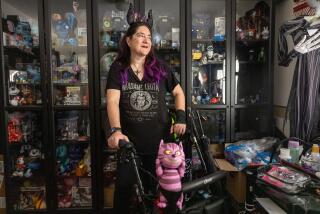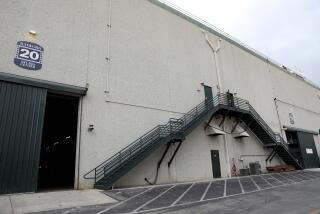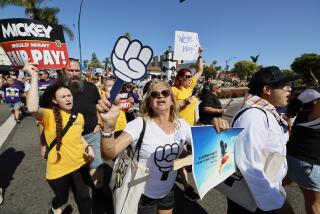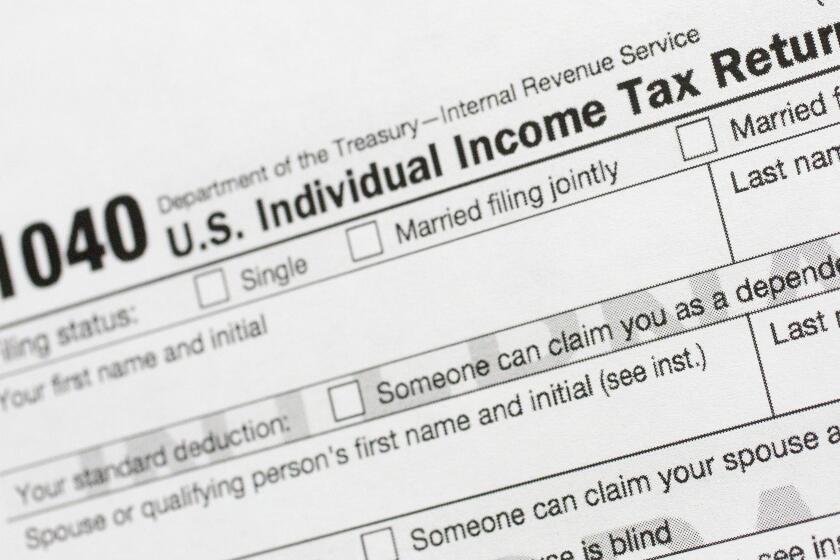Disney Heeds Orders -- and Then Some
When the state issued its investigation report Thursday on a July roller coaster crash at Disney’s California Adventure, it came as no surprise that officials ordered the amusement park to overhaul the ride’s faulty brake system.
But in an unprecedented move praised by safety advocates, the Division of Occupational Safety and Health pushed the limits of its authority, asking Disney for a wholesale re-evaluation of similar brake valves at its other parks, including those outside the United States. It was determined that a leaky brake valve had caused the crash.
Disney did what the state asked, then went further: It issued an alert to the entire amusement park industry warning of the potential brake problems. The move marks a major turnaround and an attitude change for an industry that has long fought government oversight and regulation.
“The level of cooperation and standard of care exhibited by Disney and DOSH ... exceed even my most optimistic expectations for California’s ride safety program,” said Saferparks founder Kathy Fackler, who began lobbying for an amusement park safety law after her son was injured in a 1998 accident at Disneyland.
“I have never been prouder of Disney than I am right now.”
That’s high praise coming from a La Jolla mother who has butted heads with amusement park officials and federal legislators since her son’s foot was crushed while he rode Big Thunder Mountain Railroad. The safety law, which requires that parks report accidents, took effect in 2000.
State officials also applauded Disney’s efforts and characterized their own actions as a sign of the program’s evolution.
“The ride safety program has matured since it first started and we need to ensure that riders are safe,” said Dean Fryer, a Division of Occupational Safety and Health spokesman. “So why wouldn’t we take this step? Disney really stepped up to the plate and took the requirements that we brought forward seriously.”
Before the 2000 law took effect, parks were not required to report accidents and the state had no authority to investigate. The law was prompted in part by the death at Disneyland of a tourist who was fatally struck by a metal cleat that snapped loose from the Columbia sailing ship on Christmas Eve 1998. Disney officials delayed Anaheim police for 90 minutes while workers mopped up the blood and carted away evidence.
“When the law changed, parks changed their view toward us in a more cooperative way,” Fryer said. “Now the attitude is more, ‘You can come in and do your investigation and let’s find out what went wrong.’ ”
California Screamin’ -- California Adventure’s signature roller coaster that loops riders through a silhouette of Mickey Mouse’s head -- reopened Friday, the morning after the Division of Occupational Safety and Health released its critical report. In the July 29 accident, one train on the roller coaster rear-ended another that was stopped on the tracks. Twenty-five passengers were treated at hospitals for minor injuries and released.
The report determined that brakes on the Anaheim park ride failed because of a faulty brake valve. As part of routine maintenance, Disney had replaced an old Intamin valve with a different brand, Legris. The Legris valve -- though recommended by Disney’s supplier and reportedly identical -- had a higher failure rate than Intamin’s, was made of different materials and was a different size, the report stated.
Without the state’s request that Disney notify its own parks -- and Disney’s decision to broaden the alert to the industry -- the accident would have been an isolated incident, with little knowledge of potential problems passed on.
Many states have adopted amusement park safety programs, but there is no federal agency responsible for tracking accidents, trends or equipment failures. Rep. Edward J. Markey (D-Mass.) has proposed a bill in seven consecutive years that would grant oversight of amusement parks to the Consumer Product Safety Commission. It has never reached the House floor for a vote.
In 2004, the lack of federal oversight was highlighted when a passenger fell to his death from a thrill ride at Six Flags New England, prompting Massachusetts officials to suspend all rides with the same T-shaped lap bar restraints. In California, state officials asked Knott’s Berry Farm in Buena Park and Six Flags Magic Mountain in Valencia to shut down two rides until repairs to the restraints could be made.
But at amusement parks across the country, attractions remained open -- sparking a call for federal amusement park legislation.
This time, the response was different. Disney officials said only that they were pleased with the process, but declined to elaborate on why they took steps beyond the state’s orders.
The extra action “will ensure that lessons learned are disseminated to all states with inspection programs and all ride owners who might be using the same component,” said Fackler.
Theme park industry leaders said Disney’s willingness to share its safety problems with other parks is a positive sign.
“Years ago, information wasn’t shared as readily as it is now,” said John Robinson, head of the California Attractions and Parks Assn., an industry advocacy group. “But all these parks realize now they’re in it together, and that park safety crosses all barriers and boundaries. If there’s an incident at a park, it reflects poorly on the industry.”
More to Read
Inside the business of entertainment
The Wide Shot brings you news, analysis and insights on everything from streaming wars to production — and what it all means for the future.
You may occasionally receive promotional content from the Los Angeles Times.










